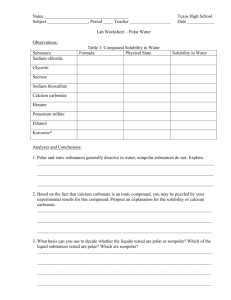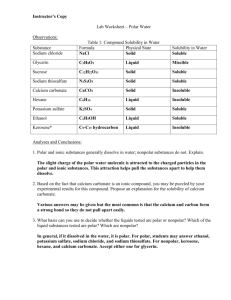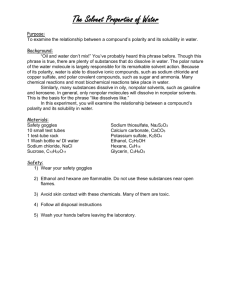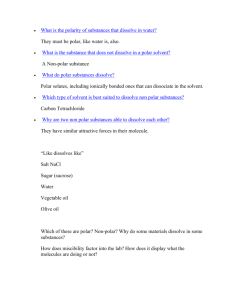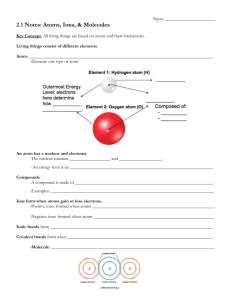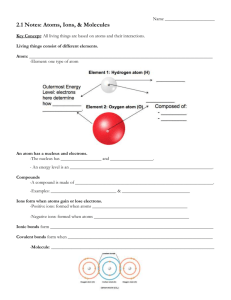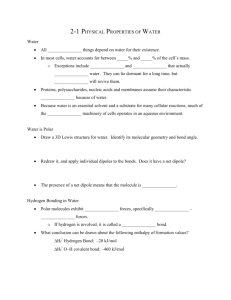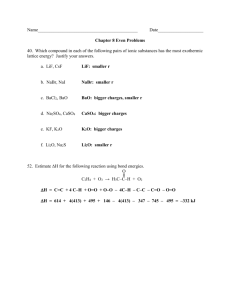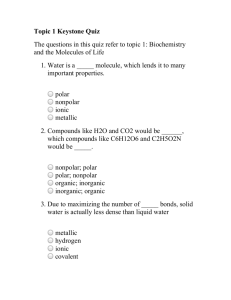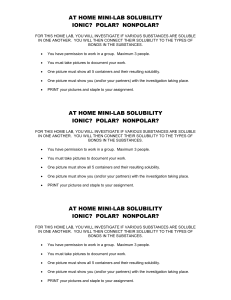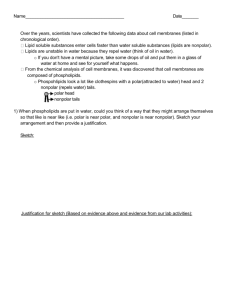Solubility & Miscibility: “Like Dissolves Like”
advertisement
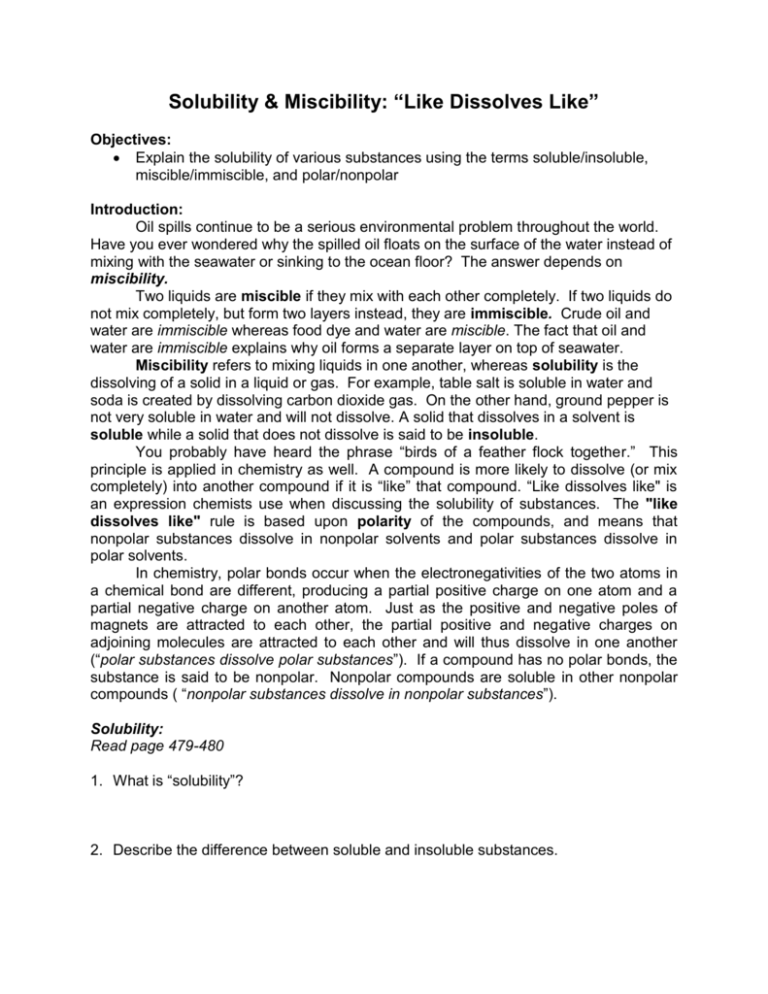
Solubility & Miscibility: “Like Dissolves Like” Objectives: Explain the solubility of various substances using the terms soluble/insoluble, miscible/immiscible, and polar/nonpolar Introduction: Oil spills continue to be a serious environmental problem throughout the world. Have you ever wondered why the spilled oil floats on the surface of the water instead of mixing with the seawater or sinking to the ocean floor? The answer depends on miscibility. Two liquids are miscible if they mix with each other completely. If two liquids do not mix completely, but form two layers instead, they are immiscible. Crude oil and water are immiscible whereas food dye and water are miscible. The fact that oil and water are immiscible explains why oil forms a separate layer on top of seawater. Miscibility refers to mixing liquids in one another, whereas solubility is the dissolving of a solid in a liquid or gas. For example, table salt is soluble in water and soda is created by dissolving carbon dioxide gas. On the other hand, ground pepper is not very soluble in water and will not dissolve. A solid that dissolves in a solvent is soluble while a solid that does not dissolve is said to be insoluble. You probably have heard the phrase “birds of a feather flock together.” This principle is applied in chemistry as well. A compound is more likely to dissolve (or mix completely) into another compound if it is “like” that compound. “Like dissolves like" is an expression chemists use when discussing the solubility of substances. The "like dissolves like" rule is based upon polarity of the compounds, and means that nonpolar substances dissolve in nonpolar solvents and polar substances dissolve in polar solvents. In chemistry, polar bonds occur when the electronegativities of the two atoms in a chemical bond are different, producing a partial positive charge on one atom and a partial negative charge on another atom. Just as the positive and negative poles of magnets are attracted to each other, the partial positive and negative charges on adjoining molecules are attracted to each other and will thus dissolve in one another (“polar substances dissolve polar substances”). If a compound has no polar bonds, the substance is said to be nonpolar. Nonpolar compounds are soluble in other nonpolar compounds ( “nonpolar substances dissolve in nonpolar substances”). Solubility: Read page 479-480 1. What is “solubility”? 2. Describe the difference between soluble and insoluble substances. Miscibility: Read page 482-483 1. Define miscible and immiscible. How do these terms relate to polarity? 2. Identify the following pairs of compounds as miscible or immiscible: a. antifreeze (polar) and water (polar) __________________ b. ethanol (polar) and water (polar) __________________ c. toluene (nonpolar) and water (polar) __________________ d. acetic acid (polar) and water (polar) __________________ e. ethanol and cyclohexane (nonpolar) __________________ f. glycerol and cyclehexane (nonpolar) __________________ g. acetone and cyclohexane (nonpolar) __________________ 3. The phrase “like oil and water” is often applied to people who cannot get along. Why do oil and water not mix?
